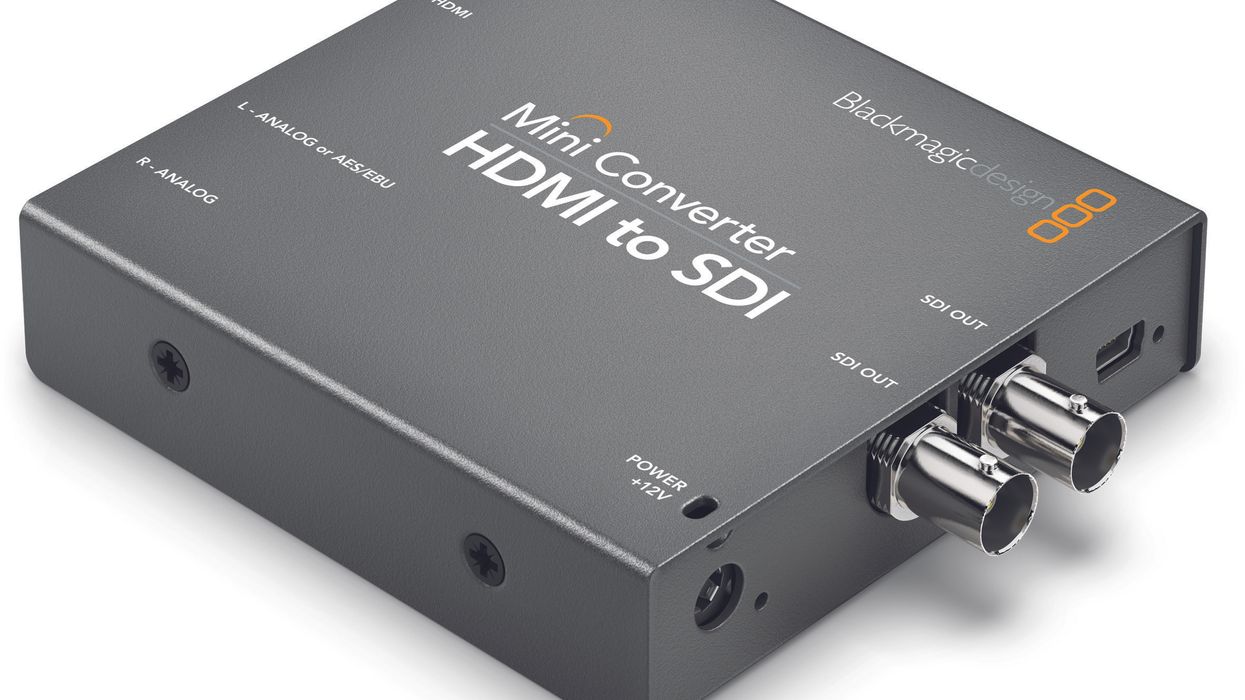Blackmagic is Bringing Back the 1080p 3G Mini Converters for $100 Less
The 3G Mini Converters from Blackmagic are back.

While the first introduction to Blackmagic for many is with their cameras, the company has been making broadcast hardware forever. One of their most popular consumer products prior to the cameras was the 3G Mini Converters, which convert HDMI to SDI, and vice versa (and much more). Even though they have more expensive 4K converters, if you only need HD, they are re-releasing the older converters at a price of $195, which is $100 less than before, with the audio converters also coming in at $195, $300 less than before. These converters can handle up to 1080p 60fps, and though they are often used in stationary environments with AC power, if you've got the right adapter, they can go on pretty much any camera.
Here's a summary of the 3G Mini Converters:
Mini Converter SDI to HDMI converts from SDI to HDMI in all SD and HD formats up to 1080p60! Audio is embedded into the HDMI output and output separately as balanced analog or AES/EBU audio. Mini Converter SDI to HDMI is perfect for using HDMI televisions and video projectors as SDI monitors for all SD and HD formats.
Mini Converter HDMI to SDI converts HDMI to SDI in all SD and HD formats up to 1080p60. Audio can be embedded from HDMI, balanced analog or AES/EBU inputs. Mini Converter HDMI to SDI is ideal for adding an SD or HD-SDI output to computers and cameras that have HDMI connections.
Mini Converter SDI to Analog is perfect for converting from SD and HD-SDI to analog component, s-video or NTSC/PAL composite. Mini Converter SDI to analog supports all SD and HD input formats up to 1080p60 and includes a down converter for when you need to convert from HD to standard definition analog formats such as s-video and composite. Audio can be de-embedded to balanced analog or AES/EBU. Mini Converter SDI to Analog is ideal for converting to older analog equipment.
Mini Converter SDI to Audio de-embeds audio from any SDI source in SD and HD formats up to 1080p60. Audio is output on 1?4" connectors for balanced analog and AES/EBU audio output to equipment such as mixers, analog decks, audio monitors and more.
Mini Converter Audio to SDI embeds audio into any SDI source in SD and HD formats up to 1080p60. Audio is input as balanced analog or AES/EBU using 1?4" connectors from equipment such as mixers and analog decks.
Mini Converter SDI Distribution distributes a single SD or HD-SDI connection up to 8 different SDI outputs at the same time. You get a true 3G-SDI design with fully re-clocked outputs and automatic switching between all SD and HD formats up to 1080p60. You also get support for all ASI, ancillary and embedded audio formats.
It's worth noting that Blackmagic makes a lot of these converters, and the 6G UHD versions are only about $100 more, so it's possible that the 4K models may suit your needs better. You can find these and more over on B&H, and they are actually listed at $185, $10 less than Blackmagic's official price of $195.
Source: Blackmagic











